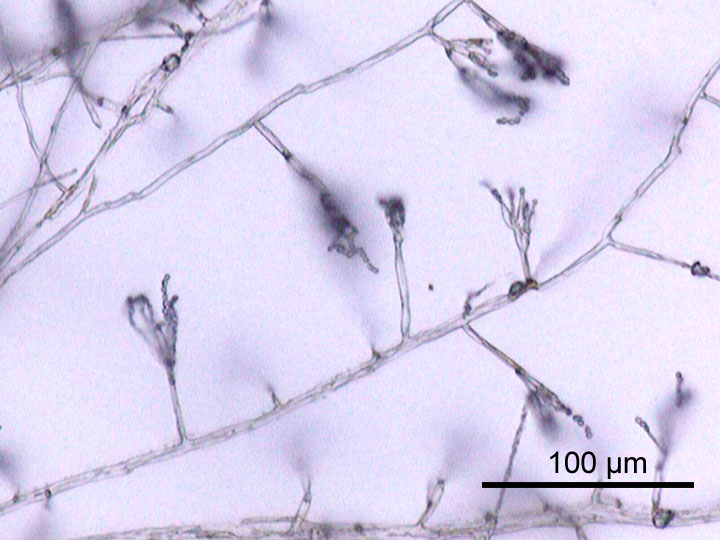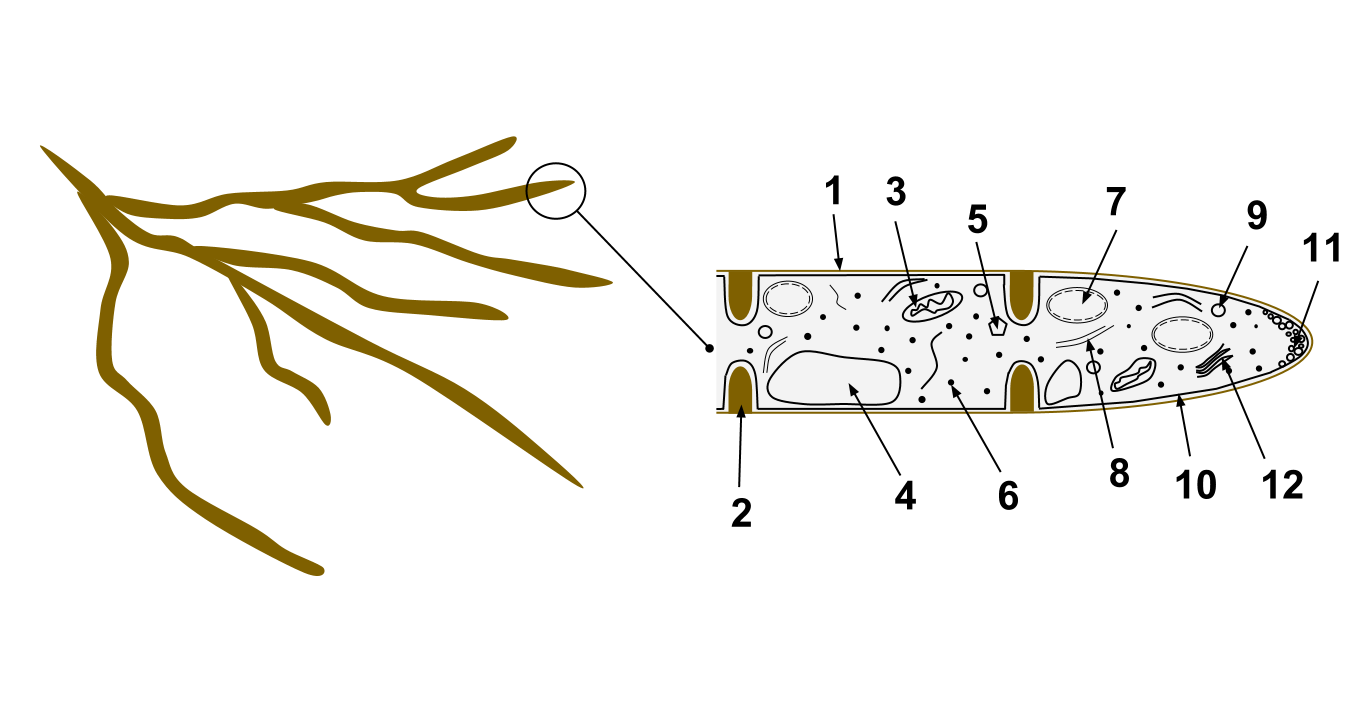|
Gongylidia
Gongylidia (singular gongylidium) are hyphal swellings of fungus cultivated by higher-attine genera of fungus-growing ants. This fungus no longer exists naturally outside the ant colonies. Developing larvae feed on the gongylidia and distributed throughout the colony to feed workers, soldiers, and the queen. They are ellipsoid, about 30–50 micrometres in diameter, rich in lipids and carbohydrates derived from the leaves, and are produced in clusters (called staphylae). See also * Pearl body * Leucoagaricus gongylophorus References Fungal morphology and anatomy Myrmecology {{Ant-stub ... [...More Info...] [...Related Items...] OR: [Wikipedia] [Google] [Baidu] [Amazon] |
Fungus-growing Ants
Fungus-growing ants (tribe Attini) comprise all the known fungus-growing ant species participating in ant–fungus mutualism. They are known for cutting grasses and leaves, carrying them to their colonies' nests, and using them to grow fungus on which they later feed. Their farming habits typically have large effects on their surrounding ecosystem. Many species farm large areas surrounding their colonies and leave walking trails that compress the soil, which can no longer grow plants. Attine colonies commonly have millions of individuals, though some species only house a few hundred. They are the sister group to the subtribe Dacetina. Leafcutter ants, including '' Atta'' and '' Acromyrmex'', make up two of the genera. Their cultivars mostly come from the fungal tribe Leucocoprineae of family Agaricaceae. Attine gut microbiota is often not diverse due to their primarily monotonous diets, leaving them at a higher risk than other beings for certain illnesses. They are especia ... [...More Info...] [...Related Items...] OR: [Wikipedia] [Google] [Baidu] [Amazon] |
Leucoagaricus Gongylophorus
''Leucocoprinus gongylophorus'' is a fungus in the family Agaricaceae which is cultivated by certain leafcutter ants. Like other species of fungi cultivated by ants, ''L. gongylophorus'' produces gongylidia, nutrient-rich hyphal swellings upon which the ants feed. Production of mushrooms occurs only once ants abandon the nest. ''L. gongylophorus'' is farmed by leaf cutter ant species belonging to the genera ''Atta'' and '' Acromyrmex'', amongst others. Description ''L. gongylophorus'' is completely dependent on ants for survival with workers feeding it cut plant matter and new queens carrying a piece of mycelium in their infrabuccal pocket (a specialised structure within the mouth) in order to found a new colony. For both its source of nutrition and mechanism of spreading it is reliant on the ants. The species has co-evolved with ants so thoroughly that it can no longer rely upon producing mushrooms to emit spores as a viable survival mechanism as it has lost th ... [...More Info...] [...Related Items...] OR: [Wikipedia] [Google] [Baidu] [Amazon] |
Hyphal
A hypha (; ) is a long, branching, filamentous structure of a fungus, oomycete, or actinobacterium. In most fungi, hyphae are the main mode of vegetative growth, and are collectively called a mycelium. Structure A hypha consists of one or more cell (biology), cells surrounded by a tubular cell wall. In most fungi, hyphae are divided into cells by internal cross-walls called "septa" (singular septum). Septa are usually perforated by pores large enough for ribosomes, Mitochondrion, mitochondria, and sometimes cell nucleus, nuclei to flow between cells. The major structural polymer in fungal cell walls is typically chitin, in contrast to plants and oomycetes that have cellulose, cellulosic cell walls. Some fungi have aseptate hyphae, meaning their hyphae are not partitioned by septa. Hyphae have an average diameter of 4–6 μm. Growth Hyphae grow at their tips. During tip growth, cell walls are extended by the external assembly and polymerization of cell wall components, a ... [...More Info...] [...Related Items...] OR: [Wikipedia] [Google] [Baidu] [Amazon] |
Pearl Body
Pearl bodies are small (0.5 - 3.0 mm), lustrous, pearl-like food bodies produced from the epidermis of leaves, petioles and shoots of certain plants. They are rich in lipids, proteins and carbohydrates, and are sought after by various arthropods and ants, that carry out vigorous protection of the plant against herbivores, thus functioning as a biotic defence. They are globose or club-shaped on short peduncles, easily detached from the plant, and are food sources in the same sense as Beltian bodies, Müllerian bodies, Beccarian bodies, coccid secretions and nectaries. They occur in at least 19 plant families (1982) with tropical and subtropical distribution. Cells or tissues that offer food rewards to arthropods are commonplace in the plant world and are an important way of establishing symbiotic relationships. Ants collect these energy-rich bodies (27.8 kJ/g dry weight) and carry them into their nests. Removal of these bodies appears to stimulate the formation of new ones in ... [...More Info...] [...Related Items...] OR: [Wikipedia] [Google] [Baidu] [Amazon] |
Fungal Morphology And Anatomy
A fungus (: fungi , , , or ; or funguses) is any member of the group of eukaryotic organisms that includes microorganisms such as yeasts and mold (fungus), molds, as well as the more familiar mushrooms. These organisms are classified as one of the kingdom (biology)#Six kingdoms (1998), traditional eukaryotic kingdoms, along with Animalia, Plantae, and either Protista or Protozoa and Chromista. A characteristic that places fungi in a different kingdom from plants, bacteria, and some protists is chitin in their cell walls. Fungi, like animals, are heterotrophs; they acquire their food by absorbing dissolved molecules, typically by secreting digestive enzymes into their environment. Fungi do not photosynthesize. Growth is their means of motility, mobility, except for spores (a few of which are flagellated), which may travel through the air or water. Fungi are the principal decomposers in ecological systems. These and other differences place fungi in a single group of related o ... [...More Info...] [...Related Items...] OR: [Wikipedia] [Google] [Baidu] [Amazon] |




